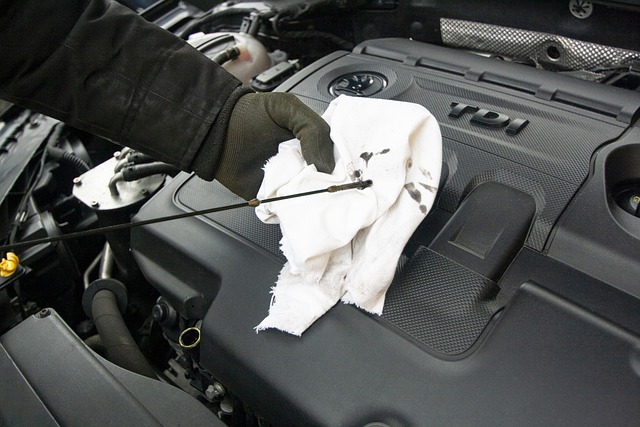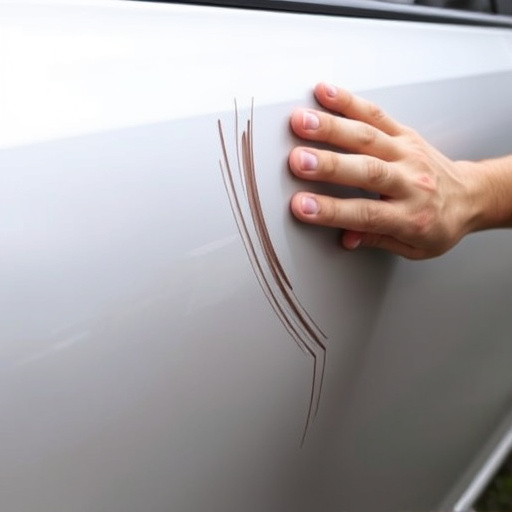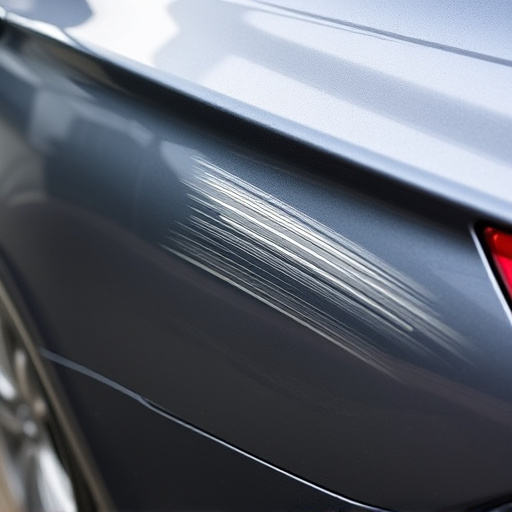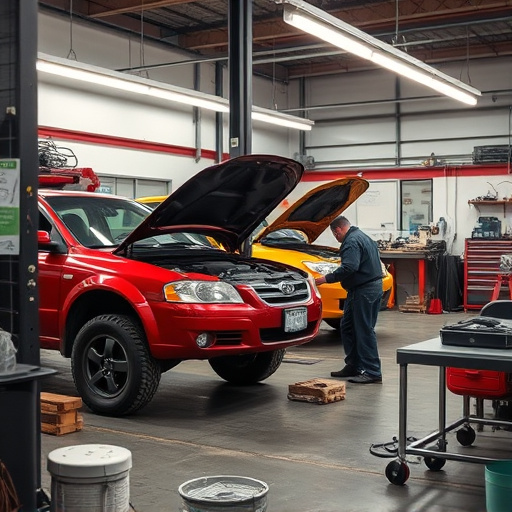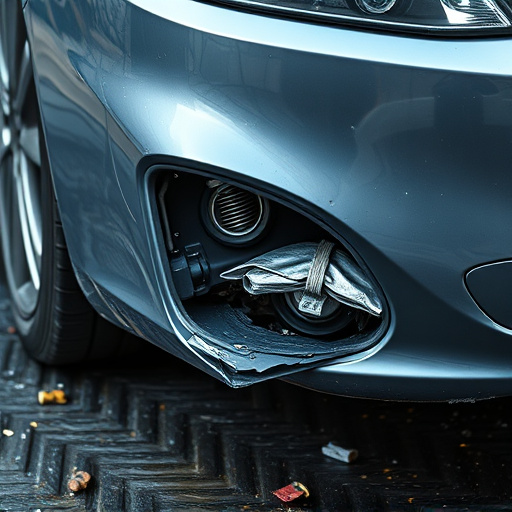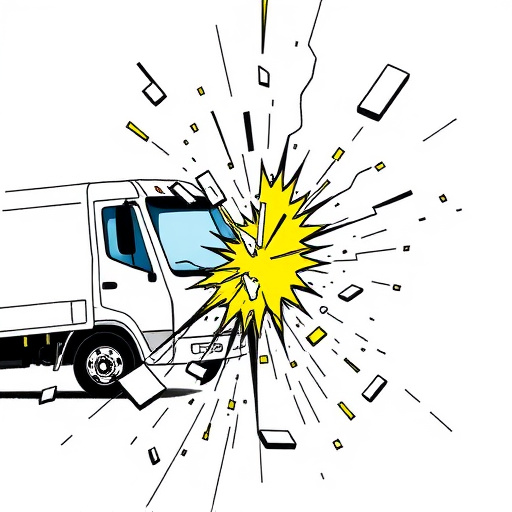The Environmental Protection Agency (EPA) sets strict standards for automotive body shops to manage and dispose of hazardous materials responsibly. To be an EPA compliant body shop, businesses must adhere to regulations on waste management, air quality, water conservation, and safe handling of toxic substances used in auto repair. This involves proper procedures for hazardous waste disposal, emissions control, water management, and staff training on safety protocols. Verification of staff training, certifications, permits, and licenses is crucial to confirm compliance and maintain an ethical reputation within the automotive industry.
Looking to ensure a shop is genuinely EPA compliant? This guide outlines crucial steps to verify their status. First, understand the Environmental Protection Agency (EPA) standards for body shops, which dictate proper disposal and handling of hazardous materials. Next, inspect documentation and certifications, verifying they align with EPA regulations. Additionally, confirm staff training and certification to ensure adherence to best practices. By following these steps, you can identify an authentic EPA compliant body shop.
- Understand EPA Compliance Standards for Body Shops
- Inspect Documentation and Certifications
- Verify Training and Certification of Staff
Understand EPA Compliance Standards for Body Shops
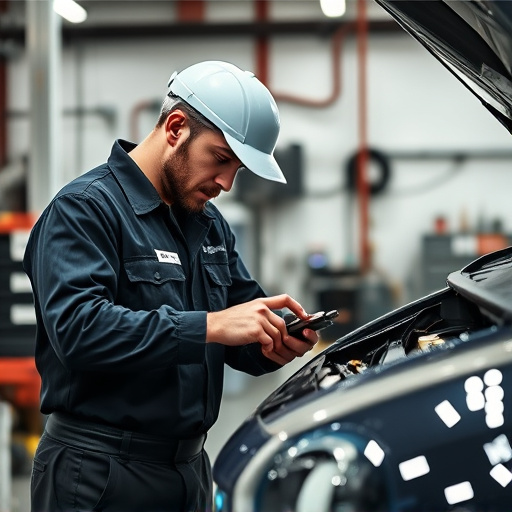
The Environmental Protection Agency (EPA) sets strict standards for automotive body shops to ensure they handle and dispose of hazardous materials responsibly. Being an EPA compliant body shop involves adhering to regulations that cover a wide range of aspects, including waste management, air quality, water conservation, and safe handling of toxic substances commonly found in automotive repair and restoration processes. These standards are designed to protect both the environment and the health and safety of workers within these facilities.
For an automotive body shop to be considered EPA compliant, it must implement proper procedures for disposing of hazardous waste, such as paint thinner, solvents, and other chemicals used in auto repairs. Additionally, they need to have systems in place to control emissions, manage water usage efficiently, and train their staff on safety protocols related to handling toxic materials. This commitment to compliance is vital not only for the sake of environmental stewardship but also to avoid legal repercussions and maintain a positive reputation as an ethical automotive repair or restoration business.
Inspect Documentation and Certifications
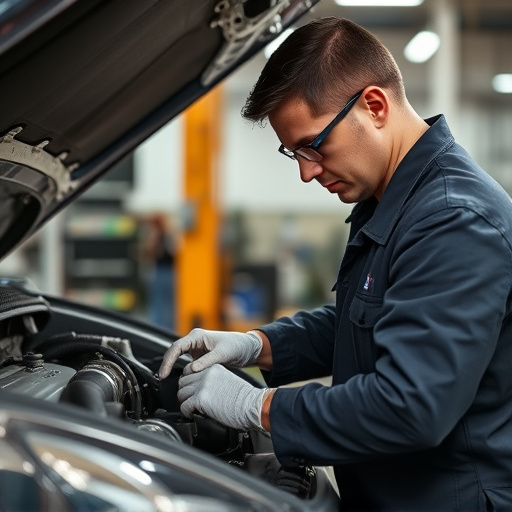
When investigating whether a shop is an EPA compliant body shop, one crucial step is to thoroughly inspect their documentation and certifications. This includes verifying that they hold valid permits and licenses for operating as an automotive repair facility, particularly for tasks such as auto glass replacement, hail damage repair, and classic car restoration. These documents should be readily available for review by customers or regulatory bodies.
The shop’s paperwork must also demonstrate compliance with Environmental Protection Agency (EPA) standards and regulations, especially those related to the proper disposal of hazardous waste generated during automotive repairs. Proper certification from training programs focused on EPA compliant practices, such as those for lead-safe removal and management of hazardous materials, can be strong indicators of a facility’s commitment to environmental stewardship.
Verify Training and Certification of Staff
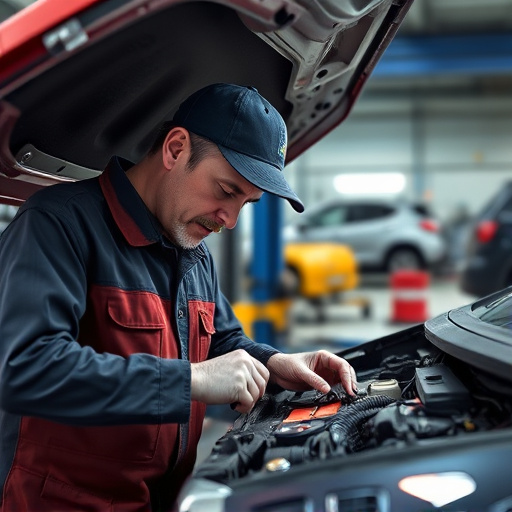
To ensure an EPA compliant body shop, one of the critical steps is to verify the training and certification of its staff. All employees involved in auto maintenance, dent removal, and car body repair should possess the necessary skills and knowledge to handle tasks safely and efficiently while adhering to environmental regulations. This includes understanding the proper disposal methods for automotive materials, such as hazardous waste and used fluids, which are crucial aspects of an EPA-compliant operation.
The shop’s training programs should be up-to-date and comprehensive, covering topics like safety protocols, use of protective equipment, and efficient techniques for car body repair. Certification from recognized institutions or government bodies can serve as a reliable indicator that the staff is well-versed in the latest industry standards, ensuring quality auto maintenance and environmental stewardship.
When verifying a shop’s status as an EPA compliant body shop, understanding compliance standards, inspecting documentation, and ensuring staff training are key steps. By adhering to these measures, you can confirm that the shop meets environmental protection agency requirements, promoting sustainable practices in the automotive industry. Remember, an EPA compliant body shop is essential for minimizing environmental impact and ensuring proper waste management during vehicle repairs.


